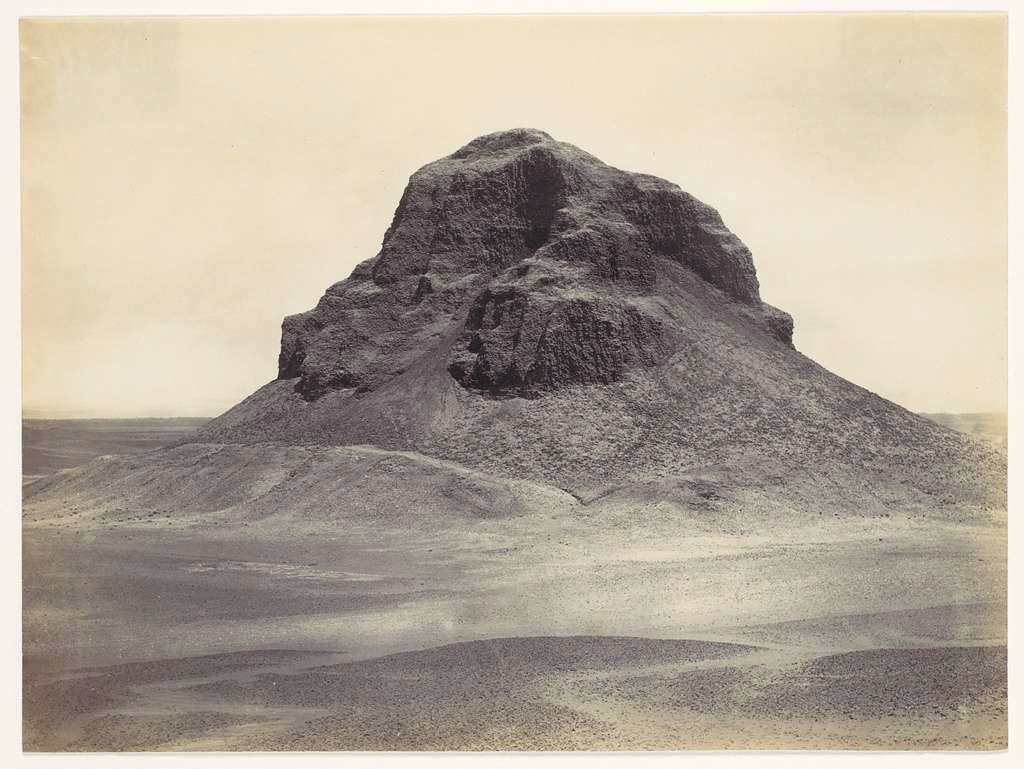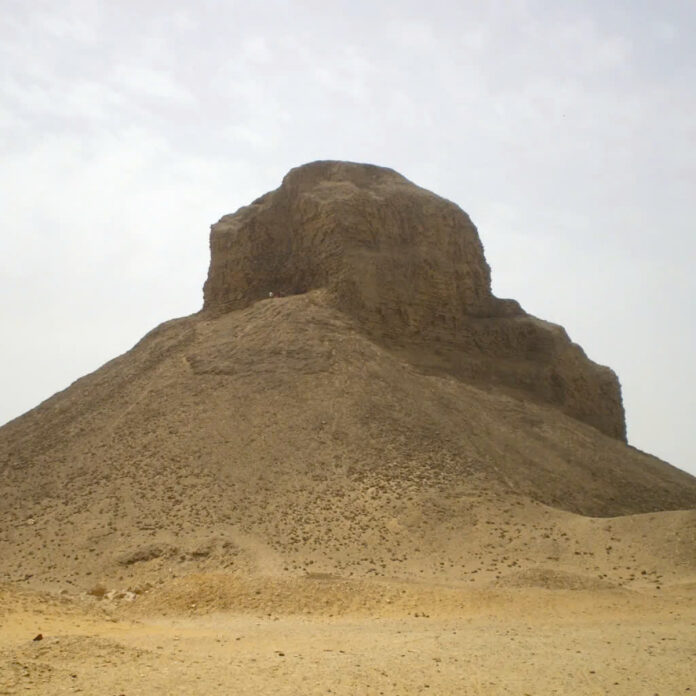A Royal Tomb Shrouded in Mystery

The ancient landscape of Dahshur, Egypt holds many treasures, but few tell a story as compelling as the crumbling structure known as the Black Pyramid. Built during the Middle Kingdom period, this remarkable monument was commissioned by Pharaoh Amenemhat III not only as his final resting place but also as an eternal home for his beloved queen. Unlike the singular royal tombs that preceded it, this pyramid embodied the concept of eternal companionship, reflecting a profound shift in royal burial traditions.
Architectural Ambition Meets Natural Adversity

Standing originally at an impressive 75 meters tall with a substantial base spanning 105 meters, the Black Pyramid represented remarkable architectural ambition for its time. However, the builders’ choice of materials—a combination of adobe, clay, and stone—proved to be the structure’s undoing. Located merely 10 meters above sea level in a low-lying area, the pyramid became vulnerable to a silent enemy: groundwater infiltration.
The Battle Against Time and Elements
The pyramid’s location proved disastrous as groundwater continuously seeped into its foundation, weakening the walls and creating structural instability. Over centuries, what was once a towering monument began to sag and collapse under its own weight, transforming from a symbol of power into a testament to the challenges faced by ancient engineers.
Video
Archaeological Discoveries Reveal Ancient Secrets

The ruins of the Black Pyramid might have remained mysterious had it not been for dedicated archaeological expeditions. Jacques de Morgan’s excavations in 1892 uncovered the first clues to the structure’s original grandeur. Later investigations by the German Archaeological Institute in 1983 further illuminated the pyramid’s construction techniques and funerary practices, proving that even in failure, the monument had much to teach us.
Legacy of the Black Pyramid
Despite its deteriorated state, the Black Pyramid stands as a crucial chapter in the architectural evolution of ancient Egypt. Its vulnerabilities highlight the experimental nature of Middle Kingdom construction techniques, while its dual-burial design reflects evolving concepts of royal afterlife. The pharaoh’s decision to share his eternal home with his queen speaks to the changing dynamics of royal relationships and the increasing importance of familial bonds even beyond death.

Today, though largely in ruins, the Black Pyramid continues to fascinate archaeologists and historians alike. It serves as a poignant reminder that even the most ambitious monuments to human ingenuity remain subject to the forces of nature and time—yet still manage to preserve their stories for future generations to discover.

